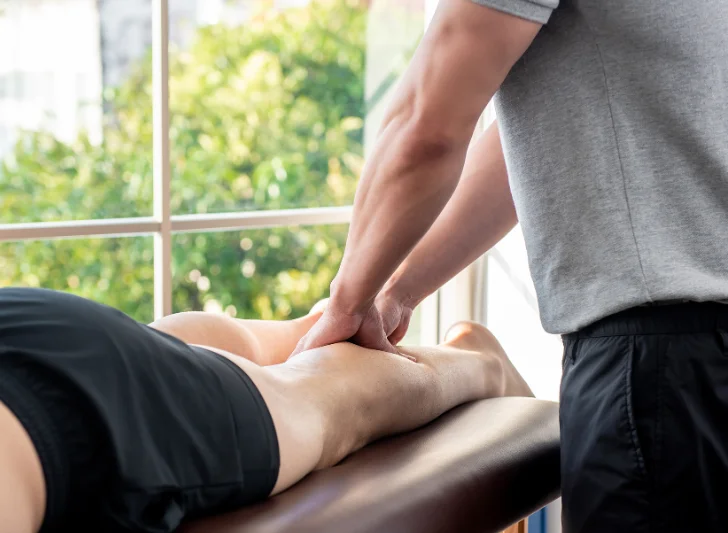Remedial massage therapy is a personalized approach to healing and pain management. Whether you’re dealing with a recent injury, chronic tension, or looking to enhance athletic performance, understanding the recommended frequency and effective window of treatment can make a significant difference in your results. As a therapist with an interest in musculoskeletal therapy, I’ve seen firsthand how adjusting the frequency of treatments based on individual needs and conditions can promote lasting relief and long-term wellness.
In this post, we’ll explore the benefits of remedial massage, the recommended frequency for different conditions, how long the effects typically last, and the effective window of relief to ensure you get the most out of your therapy.
The Benefits of Remedial Massage Key Facts

Key Fact #1: Frequency of Remedial Massage Treatments is Highly Dependent on the Condition

One of the most important factors in determining how often you should get a remedial massage is the nature of the condition being treated. The severity and duration of your symptoms play a key role in treatment planning. Here’s how we approach different conditions:
Acute Conditions (e.g., muscle strains, sprains, acute back pain)
When you’re dealing with recent injuries or tension, remedial massage can help reduce inflammation, relieve pain, and alleviate muscle spasms. In the early stages of recovery, the focus is on reducing acute symptoms and promoting healing.
- Frequency: For the first 1–2 weeks, 2–3 sessions per week may be necessary to effectively manage the injury.
- Session Duration: Typically, 30–60 minutes per session.
- Effective Window: Relief is often noticed within 24–48 hours of treatment, but the full effect might not last beyond 3–4 days without additional treatment.
- Transition: As symptoms subside, frequency can be reduced to weekly sessions.
For acute conditions, more frequent treatments provide quicker results and help manage pain during the critical early healing period.
Key Fact #2: Chronic Conditions Require Consistency and Patience

Chronic conditions, such as fibromyalgia, long-term neck or back pain, and repetitive strain injuries, tend to involve deeper muscle tension and may require a longer treatment plan. Addressing compensatory muscle patterns, postural imbalances, and deep-seated discomfort can take time.
Chronic Conditions (e.g., fibromyalgia, chronic neck pain)
- Frequency: Weekly sessions for 4–6 weeks initially, followed by fortnightly or monthly treatments for long-term management.
- Session Duration: 60–90 minutes to ensure a comprehensive approach targeting deeper muscle layers and areas of tension.
- Effective Window: Benefits are cumulative, with each session providing incremental relief. Initial relief is often felt within 24–48 hours, but over time, the effects last longer—3–7 days or even more with continued treatment.
- Maintenance Phase: Once symptoms are under control, regular maintenance can help prevent flare-ups and maintain progress.
For chronic conditions, the key to success lies in consistent treatment. Over time, regular sessions help reduce pain, improve mobility, and maintain overall muscular health.
Key Fact #3: Athletic Recovery Requires Timing and Personalization

Whether you’re recovering from intense physical training, preparing for competition, or preventing injury, remedial massage is an essential part of an athlete’s wellness plan. Post-training recovery and injury prevention are just as crucial as performance enhancement.
Athletic Recovery and Performance
- Frequency: For recovery from training or events, a session within 24–48 hours can help reduce muscle soreness (DOMS) and improve circulation. Regular sessions (1–2 per week) are ideal for maintaining flexibility, reducing muscle tightness, and preventing injuries.
- Session Duration: 30–60 minutes, focusing on specific muscle groups, fascia, and areas needing recovery.
- Effective Window: Immediate benefits are often seen in muscle relaxation, reduced soreness, and improved range of motion. For athletes, the effective window of relief can last 3–5 days, allowing the body time to recover before the next session or training.
Athletes benefit from both regular maintenance massages and targeted treatments around high-intensity training or competition. These sessions promote quicker recovery, better flexibility, and help maintain performance at peak levels.
Key Fact #4: When to Book Remedial Massage Based on Your Lifestyle

Even if you don’t have an injury or chronic condition, regular massage can still play a crucial role in maintaining your overall health and well-being.
General Maintenance and Stress Relief
For those leading sedentary lifestyles, experiencing stress, or dealing with general muscular tension, remedial massage provides an opportunity to relax and prevent long-term pain and dysfunction.
- Frequency: Every 2–4 weeks for ongoing care, depending on stress levels and lifestyle.
- Session Duration: 60 minutes for full-body relaxation or to target specific tension areas.
- Effective Window: The effects of a session can last from several days to weeks, especially when combined with healthy habits such as exercise, hydration, and stretching.
- Long-Term Impact: Regular maintenance helps keep muscles flexible, reduces stress, and prevents the development of chronic conditions.
Regular treatment sessions are essential for maintaining your body’s balance and relieving the physical effects of stress, which can otherwise lead to tension, pain, and discomfort.
In Conclusion: Tailoring Your Remedial Massage Plan
Remedial massage is not a one-size-fits-all solution. It’s an adaptable therapy that can be tailored to fit your specific needs—whether you’re recovering from an injury, managing a chronic condition, or looking to optimize your athletic performance. By understanding the recommended frequency and the effective window of treatment for your unique condition, you can ensure the best possible outcomes.
Key Takeaways:
- Acute conditions require more frequent sessions in the early stages, transitioning to weekly as symptoms improve.
- Chronic conditions need consistent, longer-term care to manage pain and prevent flare-ups.
- Athletic recovery benefits from timely treatments, with post-event massages aiding recovery and pre-event massages optimizing performance.
- Effective Window of Relief: Remedial massage typically provides relief within 24–48 hours, with the effects lasting from 3–7 days depending on the condition and treatment consistency.
A tailored approach, regular reassessments, and collaboration between client and therapist are essential for achieving lasting results. Whether you’re dealing with pain, improving athletic performance, or simply seeking relaxation, remedial massage can support your body’s healing process and help you maintain a balanced, healthy lifestyle.
Schedule your session today with our friendly Admin Team on 07 3880 1649 to take the first step toward improved muscular health and overall well-being!

